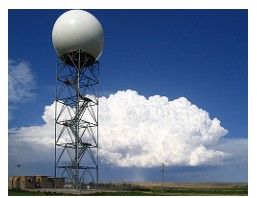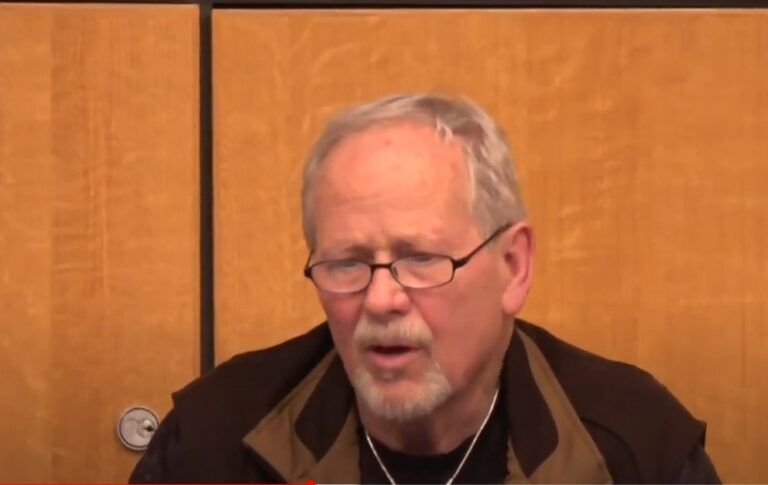CODY SCHROEDER/UNSPLASHby James Templearchive pageFebruary 19, 2021Trapped inside a long glass tube in a ground-floor lab at Harvard University is a miniature copy of the stratosphere.When I visited Frank Keutsch in the fall of 2019, he walked me down to the lab, where the tube, wrapped in gray insulation, ran the length of a bench in the back corner. By filling it with the right combination of gases, at particular temperatures and pressures, Keutsch and his colleagues had simulated the conditions some 20 kilometers above Earth’s surface.In testing how various chemicals react in this rarefied air, the team hoped to conduct a crude test of a controversial scheme known as solar geoengineering, which aims to counter climate change by spraying tiny particles into the stratosphere to reflect more of the sun’s heat back into space.But is what’s in that tube “really what the stratosphere is like?” asks Keutsch, a professor of engineering, chemistry, and atmospheric science, as he gestured toward it. “That’s the question. We try to think of everything, but I would argue you never quite know.”That’s why he and fellow researchers, including Harvard climate scientist David Keith, want to move their experiments out of their toy stratosphere and up into the real one. They hope to conduct a series of scientific balloon flights, the first of which could launch from the Esrange Space Center in Kiruna, Sweden, as soon as this summer.I seriously hope we’ll never get in a situation where this actually has to be done, because I still think this is a very scary concept and something will go wrong.Frank Keutsch, principal investigator of SCoPExThe initial flight will simply evaluate whether the aircraft’s equipment and software work properly in the stratosphere, where temperatures can plunge below 50 ˚C and the pressure ranges from one tenth to one thousandth the amount at sea level. But in subsequent launches, the researchers hope to release small amounts of the sorts of particles that could scatter sunlight.In a world that’s cutting carbon dioxide emissions too slowly to prevent catastrophic climate change, solar geoengineering might buy some time. But doing it on a large scale could mean messing with planet-wide weather patterns. The effects are unpredictable; in some places, they might even be disastrous.In the coming weeks, therefore, an independent advisory committee that is reviewing the legal, ethical, and environmental issues surrounding the project is expected to determine whether the research group should proceed with the first flight. The committee will also have to rule before any flights that actually release materials, and determine what steps the research team should or must take to engage with the public and regulators.If those launches are approved—and that’s still a big if—they will be the first geoengineering experiments in the stratosphere. But before the balloons have even left the ground, they’re already drawing criticism.Too dangerous to useThe idea of cooling the planet by dispersing particles in the atmosphere, dimming sunlight and offsetting some of the warming driven by greenhouse-gas emissions, has a precedent: nature already does it.Major volcanic eruptions such as Mount Pinatubo in 1991 have spewed millions of tons of sulfur dioxide into the air, depressing global temperatures in the years that followed. The sulfur dioxide emitted from coal plants and ships produces measurable cooling effects as well.To some critics, doing this deliberately as a measure against climate change is reckless even to ponder, let alone experiment with. Some studies have found that solar geoengineering could significantly alter rainfall patterns and cut some crop yields in certain places. On the other hand, other papers have concluded that the environmental side effects could be small so long as geoengineering is done in a moderate way.But all the research done to date, with a few small-scale exceptions, has been conducted in computer models or lab experiments. So Keutsch and his colleagues argue that their balloon trials are a critical next step.The basic idea for their so-called SCoPEx experiments, first proposed back in 2014, is to launch a balloon, equipped with propellers and sensors, that would release up to two kilograms of sub-micrometer-size particles in a roughly kilometer-long plume. A commercial airliner pumps out similar amounts of material every minute, Keith notes.Then the balloon would tack around and slowly zigzag through the plume from the opposite direction. Its sensors would attempt to measure how widely the particles disperse, how they interact with other compounds, and how much sunlight they reflect.COURTESY OF SCOPEXWhatever they found could be fed back into computer models, refining our understanding of what spraying hundreds of thousands to millions of tons of material may do.At this point, the team hopes to conduct a series of flights over a number of years. At first, they intend to release a fine dust of calcium carbonate—the principal ingredient of chalk—but eventually the researchers want to test other materials, likely including sulfuric acid (which is a by-product of the sulfur dioxide released from volcanoes).But some fear that even these limited experiments are a step too far.Wil Burns, co-director of the Institute for Carbon Removal Law & Policy at American University, believes there should be an attempt to reach some kind of global consensus about whether society should ever use such a tool before outdoor experiments go ahead.But for him, the answer is no: The environmental impacts are unknown. The challenges of governing such a tool are immense—a single country could carry out solar geoengineering on its own, but all countries would be affected. And future generations could be forced to manage the effects for hundreds of years. He adds that we can’t know what it will really do at a planetary scale until it’s fully deployed—and at point, we’ll be stuck with any droughts or other dangers until the effects subside.Some environmental groups and geoengineering critics are calling on government officials in Sweden, where the first SCoPEx flight would launch, and the heads of the Swedish Space Corporation, which would manage them, to oppose the experiments. They argue not that the research itself presents environmental risks but that it creates a “slippery slope toward normalization and deployment” of a perilous and powerful tool.Solar geoengineering “is a technology with the potential for extreme consequences, and stands out as dangerous, unpredictable, and unmanageable,” reads a letter issued by Greenpeace Sweden, Biofuelwatch, and other groups. “There is no justification for testing and experimenting with technology that seems to be too dangerous to ever be used.”The reluctant researcherKeutsch says it’s a “very valid” fear that geoengineering experiments could make eventual use of the technology more likely. As he told me during an interview in his office, he himself thinks geoengineering is the wrong way to address climate change. He compared it to opiates that ease acute pain but lead to other problems like addiction. The far safer, more effective solution would be to rapidly slash greenhouse-gas emissions.But, he fears, climate change is so far along and so likely to become so disruptive that some desperate nation may move ahead with geoengineering anyway. An earlier Harvard study found that the cost of developing and flying a fleet of specialized planes to do the job would cost as little as $2 billion a year, putting it within the economic reach of many countries.Since it’s the only tool that could make any real difference to global temperatures within the period of a political term, it could become an incredibly seductive option in nations suffering through deadly heat waves, droughts, famines, fires, or floods. Using it without sufficient research would be “very dangerous,” Keutsch says.Harvard professor Frank Keutsch, principal investigator of SCoPEx.ELIZA GRINNELL, HARVARD SCHOOL OF ENGINEERING AND APPLIED SCIENCE“People think that because I’m doing geoengineering research I sort of want to do geoengineering,” he says. “My view is actually very strongly that I seriously hope we’ll never get in a situation where this actually has to be done, because I still think this is a very scary concept and something will go wrong.”“But at the same time, I think better understanding what the risks may be is very important,” he adds. “And I think for the direct research I’m most interested in, if there is a type of material that can significantly reduce risks, I do think we should know about this.”OversightThe team initially hoped to begin balloon flights as early as 2018 in Tucson, Arizona, and subsequently explored plans in New Mexico. They opted to move the first effort to Sweden because of “COVID-19 and other logistical and scheduling challenges,” according to the project website.Part of the delay was due to the Keutsch team’s decision to set up an independent committee to evaluate the ethical and legal impacts of their proposed experiments. They didn’t have to have one, since the research effort has no federal funding. (Indeed, when the project began, there was no US federal funding for geoengineering research. The project runs on internal Harvard money and donations from individuals and groups including Bill Gates, the William and Flora Hewlett Foundation, the Alfred P. Sloan Foundation, and others.)But Jane Long, a former associate director at Lawrence Livermore National Laboratory, strongly recommended that an external review committee be created. (She also helped pick its chairperson.) “It was important for the future of this technology that they’re not seen as bad scientists running off to do some experiment without any review,” she says.Long stresses that the experiments, as first proposed, are very small scale and unlikely to present health or environmental dangers. But the board, she says, forces the researchers to articulate what the work is for and to address public concerns.The committee has already issued a report providing suggestions on how the research team should communicate with the public before any flights that release particles. Among other things, it recommends creating a briefing book to explain the issues and inviting people who live near the balloons’ flight path to “participate in deliberative dialogue about the experiment itself as well as governance of solar geoengineering research.”Still, Burns and others argue that the committee is missing some crucial voices, including critics of geoengineering research and representatives from poorer countries. And he believes these blind spots are evident in the committee’s initial report. “It assumes, and kind of evinces a bias, that we’re only doing the public engagement to figure out how to get to the next stage in terms of field experiments—and that seems to be creating a kind of foregone conclusion in terms of what will happen and what should happen,” he says.What they might learnKeutsch’s team has already run computer simulations exploring how the particles released from their equipment will dissipate into the air. If and when they starting testing this for real, they should be able to measure more precisely how specks of calcium carbonate or sulfuric acid spread out or clump together—a crucial test of how well these materials might work for geoengineering. If the particles are too big, they’ll sink too quickly out of the stratosphere, requiring more materials to scatter the same amount of sunlight.Another crucial question is how the particles will react with other chemicals in the stratosphere—particularly the calcium carbonate, since it doesn’t occur up there naturally.COURTESY OF SCOPEXThe team chose calcium carbonate instead of sulfates for two reasons, Keutsch says: sulfates eat away at the protective ozone layer, and while they have a cooling effect at the Earth’s surface, they warm the stratosphere. That could stir up weather patterns in ways that could be hard to foresee. “You are trying to poke the Earth system in ways that I don’t think our models are good at predicting,” he says.Calcium carbonate comes with its own unknowns, however. Those experiments in the glass tube found that it is not particularly reactive with the compounds it will encounter in the stratosphere. But the way it interacts with other chemicals in the real one could affect how much ultraviolet radiation is absorbed and how much sunlight is scattered.The observations from the flights could help refine our understanding of how much of these materials may be needed to lower global temperatures, what risks releasing them could pose—or whether it will work at all.But there will still be real limits on what the researchers can learn from tiny balloon experiments. They won’t be able to detect the longer-term fate of particles released into the stratosphere, because they’ll quickly become too dilute to detect. Moreover, Keutsch acknowledges, there are simply some things that can’t be known until someone deploys solar geoengineering at full scale.“The Earth system is so complex,” he says. “I don’t think we can predict entirely. We can’t ever be really sure of what’s going to happen when you do this.”Article metaSharefacebooklink opens in a new windowtwitterlink opens in a new windowredditlink opens in a new windowlinkedinlink opens in a new windowwhatsapplink opens in a new windowemaillink opens in a new windowLinkAuthorJames TempleJames TempleLatest contentThe Big Story: GeoengineeringFeb 19A first-of-its-kind geoengineering experiment is about to take its first stepHarvard scientists plan to launch a balloon this summer to test the equipment needed for the first geoengineering experiments in the stratosphere.01.Why geoengineering may narrow global economic inequalityJan 1302.The odds of US climate progress just improved a bitJan 0703.Our midcentury climate goals require radical change todayOct 13Categorized inOpinion1 dayWhat we can learn from the Facebook-Australia news debacleDemocracies are right to look for creative ways to direct money from big tech to the news industry.Categorized inBiotechnology2 daysA leaked report shows Pfizer‘s vaccine is conquering covid-19 in its largest real-world testCountry-wide data from Israel, which leads the world in vaccinating its population, reveals that the vaccine sharply cuts infections.israel vaccinations queueCategorized inHumans and technology2 daysThe government failed Texans—so people on the internet stepped inBut activists, working through a record-breaking freeze, say it shouldn’t have to be this way.two men filling two water tanks with a hoseCategorized inSpace3 daysThis is the first image taken by NASA‘s Perseverance Mars rover. Now the hunt for life begins.After surviving the descent, the rover sent back this picture from the Martian surface.The Big Story: Tech PolicyFeb 17How to fix what the innovation economy broke about AmericaAcross the country, small towns have been left behind. Finding a way to turn things around is crucial if American democracy is to be saved.West High Street, Bryan OH01.Why tech didn’t save us from covid-19Jun 1702.Why venture capital doesn’t build the things we really needJun 1703.Tech is having a reckoning. Tech investors? Not so much.Jan 24The battle of algorithms: Uncovering offensive AISPONSOREDLearn about current and emerging applications of offensive AI, defensive AI, and the ongoing battle of algorithms between the two.In association with DarktraceCategorized inSpace3 daysThe first black hole ever discovered is more massive than we thoughtCygnus X-1’s black hole was first discovered more than half a century ago. But it continues to teach us new things.Climate changeFeb 16Bill Gates and the problem with climate solutionismFocusing on technological solutions to climate change feels like an attempt to dodge the harder
Du vil kanskje også like
Mer fra forfatter
Luftfart og den globale atmosfæren
14. april 2025
Stoltenberg hyllet «Det norske Vi» i Oslos største moské
10. april 2025
Avbryt svar
Du må være innlogget for å kunne kommentere.
This site uses Akismet to reduce spam. Learn how your comment data is processed.












+ There are no comments
Add yours